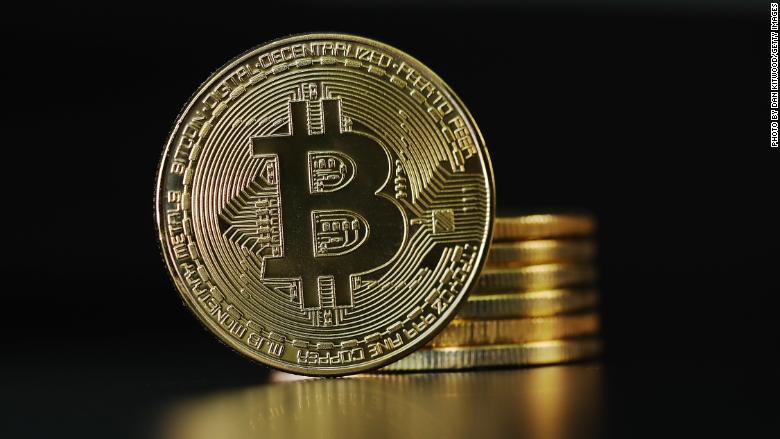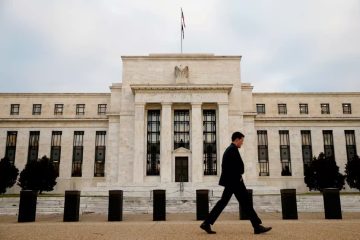5 Worst-Case Scenarios That Could Cause the Price of Bitcoin to Crash

In Greek mythology, Sisyphus continually pushed a massive rock up a hill only to have it roll back on him down the slope. Could the same thing happen to Bitcoin?
In 2017, Bitcoin gained nearly 14,000% making the digital currency the story of the year. But its ascent to the top of the cryptocurrency market is not without risks. Bitcoin’s market dominance has fallen from a lofty 85% in January 2017 to 38% at the end of 2017, reflecting investors’ uneasiness about placing all their eggs into one basket. There’s also growing sentiment to hold other crypto investments such as Ethereum (12% of total cryptocurrency market capitalization), Bitcoin Cash (10%) and Ripple (8%).
While Bitcoin may not necessarily turn out to be Tulip Bubble 2.0, there are worst-case scenarios that could cause its price to tumble very quickly. Here are 5 of the top ones:
1. A major exchange fails
At the end of 2014, Mt. Gox handled over 70% Bitcoin transactions worldwide. A few weeks later, the exchange filed for bankruptcy. Mt. Gox’s failure resulted in the loss of 650,000 Bitcoins valued at $ 9 billion at current prices. Today, hackers from North Korea and Eastern Europe could wreak havoc on the Bitcoin market. A failure, theft or hack of a major exchange can lead to a significant loss of confidence in Bitcoin (and other cryptocurrencies), and investors could head for the exits.
When China banned Bitcoin exchanges in September 2017, Bitcoin’s price plunged from nearly $ 5,000 to $ 3,700 in two weeks. South Korea, Israel and Russia are currently exploring ways to crack down on crypto exchanges.
In 2018, the U.S. regulatory environment could also get tougher on the industry. The tax reform bill that recently passed Congress proposes to close a Bitcoin loophole, making “like kind exchanges” applicable only to real estate property. The IRS could require all crypto trades to be taxable under section 1031, requiring much work in accounting for gains and losses of each trade.
2. Slow transaction times and high fees turn away users
Depending on network congestion, Bitcoin’s median transaction time can range from 15 to 25 minutes. And during peak times, transactions can take a few hours. Contrast that with competing payment solutions such as PayPal, Bitcoin cash (BCH) and Ripple which are all near-instantaneous. At any moment, there can be a backlog of 80,000 to 125,000 Bitcoin transactionswaiting to be confirmed, according to blockchain.info. That backlog could get worse as more people use Bitcoin. It’s not unreasonable for consumers to expect fast transactions in line with traditional payment methods.
Today, Bitcoin’s meager 1 megabyte (MB) file size for transactions is at maximum capacity, processing nearly 2,500 transactions per block on the blockchain, according to Bitcoin.com. Compare that to Bitcoin Cash’s (BCH) much larger 8 MB file size, which can accommodate hundreds of transactions per second.
Not only is Bitcoin slow, but it’s also costly to use. Its average transaction fee has skyrocketed from nearly $ 10 in January 2017 to around $ 140 in December 2017. The risk is that people could lose interest if fees continue to rise. By contrast, Bitcoin Cash’s transaction fee can be just fractions of a penny.
Bitcoin doesn’t possess a monopoly on digital cash, so it’s only as good as its usefulness. If Bitcoin’s technological features don’t adapt to an evolving marketplace and sky-high expectations, it risks losing market share to more effective and efficient competitors. At some point during our journey towards civilization, humans stopped using seashells and beans as money because of diminished or nonexistent utility.
3. Unexpected events limit power
Bitcoin miners consume enough electricity to power 2.9 million U.S. households compared to just 50,000 households for Visa (V – Get Report) , according to Digiconomist. Despite the disparity, Visa’s network is much more efficient: It’s capable of processing upwards of 50,000 transactions per second during peak times (such as the holidays), compared to Bitcoin network’s 400,000 per day. At 32.36 terawatt-hours per year, Bitcoin’s electricity consumption exceeds that of entire countries such as Qatar, Hungary and New Zealand.
If there’s a sudden shortage of power (such as during a natural disaster or national emergency), regulators could impose limitations on electric usage, resulting in slower transaction times if enough operators are taken off the grid.
4. Miners move on to other applications
Mining requires immense computing power to solve complex algorithms that validate transactions and secure the Bitcoin network. Its global CPU power is estimated at 8.23×10²² floating point operations per second (FLOPS) representing 17% of total global computing power, AI scientist Yangdong Deng told audiences at a recent blockchain conference.
But miners’ assets — Application Specific Integrated Circuit (ASIC) computers — aren’t limited to performing algorithmic problem solving. If mining profitability diminishes for some reason (such as higher costs in hardware or electricity), they can apply their immense CPU capabilities towards other causes, such as financial modeling, cancer research, genetic mapping, artificial intelligence, game theory, advanced mathematics or hundreds of other applications.
Miners can also switch to mine other cryptocurrencies, with Bitcoin rivals adjusting their rewards program to make their tokens much more profitable to mine compared to Bitcoin, possibly leading to an exodus of nodes. If enough miners leave the network, that could exacerbate frustrations regarding processing delays and scalability.
5. The regulatory environment gets tougher
Miners are subject to local regulations, and a change in the political climate can reduce the attractiveness of the network’s line of work: 58% of mining operations are located in China, according to 2017 study by University of Cambridge.
If Beijing is capable of banning Bitcoin exchanges (which they did back in September), then who’s to say officials won’t restrict mining operations if Bitcoin continues to threaten the Chinese Yuan? The same Cambridge study found that only 35% of large exchanges have a formal government license, which means other countries can follow China’s lead and impose restrictions on Bitcoin trading on legal grounds.
Bitcoin traded at nearly $ 900 in January 2017 and it now trades at close to $ 12,000. But its remarkable rise certainly doesn’t eliminate new and evolving threats to its existence.



